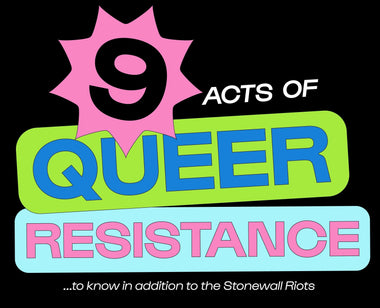Your NO BS Intro to BDSM

What is BDSM?
Short answer: it’s not just whips and chains. BDSM encompasses a host of different erotic practices that can hinge on one or several different dynamics, including:-B&D (bondage and discipline)
-D&S (dominance and submission)
-S&M (sadism and masochism)
Practitioners explore these through a variety of different actions that target either a physical response in their partner, a psychological response, or both.
A common misconception is that all manifestations of kink in BDSM involve inflicting extreme pain. However, even something as simple as running fingernails down someone’s back or light spanking can fall under the BDSM umbrella. Levels of engagement with BDSM can range from casual one-time experimentation to dedicated adherents who ascribe to it as a lifestyle, and everything in between.
Often (but not always) BDSM involves one participant assuming a “Dom(inant)” role and controlling the course of activities, while a counterpart assumes a “Sub(missive)” role and endures varying degrees of sensation or other forms of discipline at the hand of the Dom. (Some individuals also identify as “switches”, preferring to act as Dom or Sub depending on the nature of the situation).
Another common misconception (widely perpetuated by movies and TV) is that all Doms relish sadistically exploiting Subs with little regard to their pleasure. In point of fact, nearly all BDSM communities rigorously emphasize the importance of negotiation and consent. A submissive is someone who derives pleasure from and consents to be dominated. Indeed the common BDSM concept of “topping from the bottom” involves an ostensible Sub controlling and manipulating the relationship, while appearing obedient and passive.
Kinds of Experimentation
As mentioned above, the range of physical and mental activities that constitute BDSM play is incredibly varied. Generally speaking, however, most types of activities tend to fall into one or more of several broad categories:
Physical vs. Mental
- Physical Play: activities carried out physically (note- these are not always strictly sexual). Such activities can involve elements including by not limited to
- Mental Play: activities intended to have a psychological impact (sometimes done in conjunction with any physical play, sometimes not)
o Such activities can involve elements including but not limited to role play, exhibitionism, power play (where a Dom will issue commands to the Sub to obey) and more
Spectrum of Intensity
- Light Play: activities considered less socially deviant and more “vanilla” (light bondage, light sensation play, casual spanking, e.g.)
- Heavy Play: more intense activities such as flogging, more restrictive bondage etc.
- Extreme versions of heavy play may include “edge” play, which involves elements that could be considered more dangerous (knife play, humiliation/degradation, autoerotic asphyxia etc.)
Figuring it out
Colloquially, “kink” tends to refer to what people enjoy as concerns sexual interactions/dynamics with other people, while fetishes tend to be more focused on objects or objectified body-parts (e.g. getting handcuffed or having your neck breathed on might be one of your kinks, while you might have a fetish for leather or shapely asses).
Before you get started with BDSM you should identify what types of kinks or fetishes you are either enthusiastically a fan of or curious to try, as well as what is on the list of things you do not want to experiment with or experience under any circumstances. Some people find a “green light/yellow light/red light” or “hard limits/soft limits” framework helpful when thinking about this.
If you’re not sure what you like and what you don’t, take the time to do a bit of self-reflection. Watch some erotic videos, read some erotic literature or check out a BDSM “yes/no/maybe” checklist (a simple Google search will turn up a number of these)- see what piques your interest and what doesn’t. Keep in mind that for many people such preferences can evolve and change greatly over time and with experience.
Communication, Consent, and Safety
Any BDSM play should be preceded by an extremely open dialogue between both parties about what each participant's personal preferences, expectations, and limits are. Particularly for more intense play, both parties should agree on a “safe word” or nonverbal signal (like a hand squeeze) which can be used (typically by a Sub) to indicate that the activity at hand needs to be slowed, changed, or stopped. It is best to practice BDSM with someone you know and trust to honor your stated limits.
A few other general things to keep in mind and keep you (and your partner) safe:
- Avoid significant use of intoxicants before play to ensure that all parties remain attuned to each other’s wishes. Sessions should start slow and build gradually, to ensure that everyone is comfortable with the proceedings.
- Strokes from whips and paddles should typically be concentrated on the fleshier, more muscled parts of the body (i.e. buttocks) to avoid injury.
- For hot wax play, avoid harder candles such as those made of beeswax which can have a high enough melting point to cause burns. Stick to soft, paraffin candles.
- During bondage play, be careful not to overly limit circulation- if a part of your or your partner’s body is “falling asleep” loosen any restraints.
- “Aftercare”: just as upfront communication is extremely important, debriefing after a session and making sure your partner has their emotional, psychological, and physiological needs met is equally crucial. Be sure to discuss what you both enjoyed, what you didn’t etc. so that successive sessions will be even better.


Latest Articles

A Hot and Quick Guide to BV, UTIs, and Yeast Infections

9 Acts of Queer Resistance to Know in Addition to the Stonewall Riots








